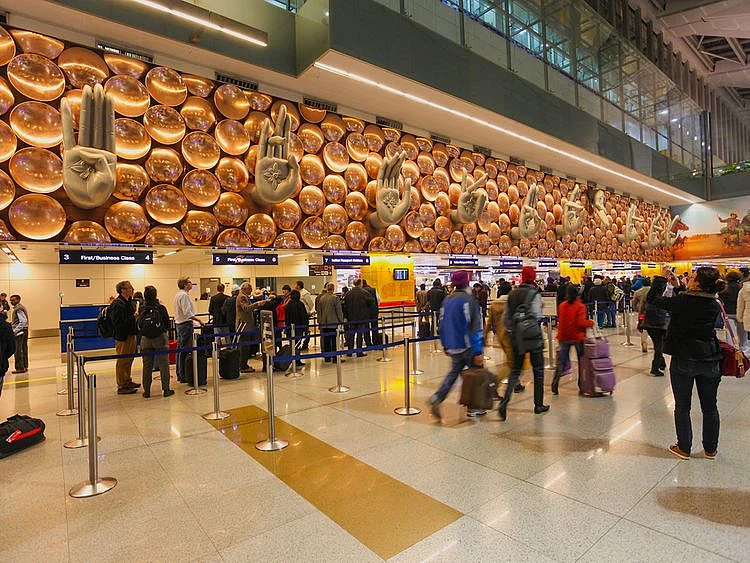India’s airline industry will see benefits of consolidation
After a long time, India’s aviation sector benefits from having fewer players flying

The Indian aviation sector is undergoing a profound transformation.
From a fragmented field of more than a dozen airlines in 2015, the market is fast coalescing into a two-horse race: IndiGo and the Tata Group–backed Air India.
What was once a high-churn, low-margin battleground of small and mid-sized players is now becoming a more disciplined, consolidated industry – potentially setting the stage for its most stable and investable phase in decades.
Turbulence below the surface
India’s airline industry has long suffered from structural fragilities. High fuel costs, punitive taxation, limited pricing power, and infrastructure bottlenecks have formed a near-permanent headwind.
In FY23, Indian carriers paid approximately $15 billion for aviation turbine fuel (ATF), with fuel comprising 35%–45% of an airline’s cost base - far above the global average of 25%. Despite robust passenger growth, most carriers struggled to achieve sustained profitability
The operational squeeze was particularly fatal for weaker airlines. Carriers like Jet Airways, Go First, Air Costa, TruJet, and Air Pegasus failed to manage their cost structures, scale effectively, or secure long-term investor confidence. Go First’s 2023 insolvency was emblematic: burdened with over Rs110 billion in liabilities, the airline collapsed under the combined weight of engine supply issues and unmanageable lease obligations.
A market reordered
While several airlines have exited or downsized, the winners have scaled up decisively. IndiGo, launched in 2006, has steadily increased its market share from 36% in 2018 to roughly 60% in 2024, aided by strong cost control, a single aircraft type strategy, and reliable operational performance.
Meanwhile, the Tata Group’s acquisition and merger of Air India, Vistara, and AirAsia India into a single integrated entity has redefined the full-service segment. Post-consolidation, the Air India Group commands about 26% share of the domestic market and a growing international footprint, especially in long-haul markets where IndiGo has limited presence.
Other players such as SpiceJet and Akasa Air remain in the fray but face scale limitations. SpiceJet, hampered by legacy debts and an ageing fleet, now holds less than 5% market share. Akasa, a recent entrant with around 20 aircraft, has shown promise but must navigate the same cost and capacity constraints that hobbled its predecessors.
Economics of scale and survival
India’s domestic passenger growth - hovering at 8%–10% CAGR - offers immense opportunity, but scale remains the key differentiator. Passenger Load Factors (PLFs) above 80% are now standard only for large carriers with national networks and frequent schedules.
For smaller airlines, breakeven utilization rates remain elusive.
Crucially, the ongoing duopolization may enable higher pricing discipline, especially in lean periods. With fewer carriers chasing the same passenger pool, fare wars may give way to more rational capacity deployment and network planning.
For investors, this marks a fundamental shift: from volume-driven, price-sensitive returns to potentially more stable and yield-focused economics.
Moment of reckoning and opportunity
The transition to a duopoly is not unique to India. We’ve seen similar patterns in other high-growth aviation markets like Brazil and China, where scale and state support helped major players emerge dominant.
In India’s case, regulatory alignment - such as rationalizing ATF taxes, accelerating infrastructure upgrades, and fostering regional connectivity - could provide the final catalyst for a sustainable industry reset.
The government’s ‘UDAN’ scheme has made progress in expanding connectivity, but viability gaps remain. Incentives must be better aligned to reward operational consistency and on-time performance, not just route rollout.
Meanwhile, digitalization and customer experience are becoming decisive battlegrounds. Tata’s investment in Air India’s brand, fleet, and service overhaul is setting a new benchmark, while IndiGo is investing aggressively in international expansion and ancillaries. Both are competing not just on price or punctuality -but on who can better win the future Indian flyer.
A decade ago, Indian aviation was a chaotic arena with too many players chasing too little profit. Today, that landscape has narrowed sharply.
The path forward is clearer: those who can scale, sustain, and innovate will define the next chapter of Indian aviation. For the first time in recent memory, investors and consumers alike may finally see a market that flies higher - for longer.
Network Links
GN StoreDownload our app
© Al Nisr Publishing LLC 2025. All rights reserved.